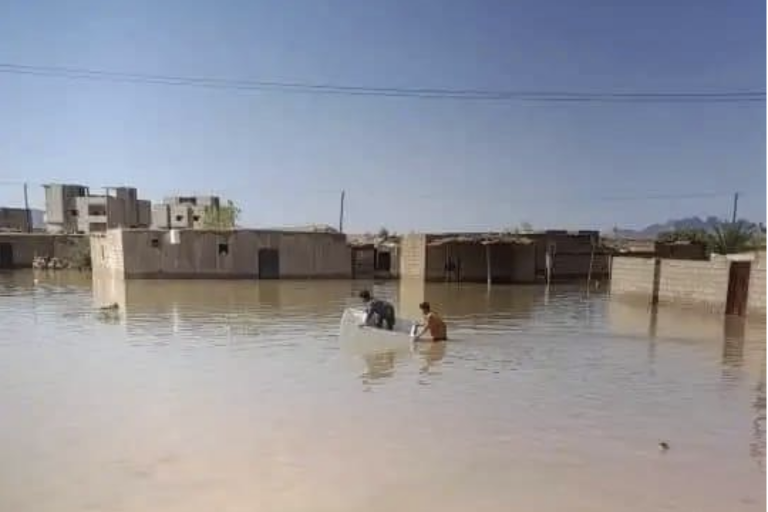Parts of Libya affected by extreme weather: LNMC

Extreme weather extreme has affected the far southwestern regions of Libya since Wednesday 14 August, 2024, especially the border areas with Algeria and Niger, which have been affected by cells of rainy thunderclouds originating from the movement of the Inter-Tropical Convergence Zone (ITCZ) northward.
According to the satellite images of these regions, the impact continued for about three days causing the fall of huge amounts of rain ranging between 46 – 51 mm in Obari, ALGatron, Alwaynat, Thala, Ghat and El-Berkat. The heavy rain in Thala, Ghat and El-Berkat coincided with the movement of floods coming from the Algerian Tassili and Djanet Mountains adjacent to the Libyan territories.
The floods submerged many houses and farms and led to road landslides and disruption of communications services and electricity. The National Meteorological Centre (NMC) issued and disseminated an early warning to the public sectors and via the media 48 hours before the occurrence of this extreme urging them to take more care and caution.
The issued early warning has been updated more than once.
This follows an earlier episode of extreme weather, which affected the far southeastern regions of Libya since 6 August 2024, especially the border areas with Niger, Chad, Sudan and Egypt, which have been affected by cells of rainy thunderclouds originating from the movement of the Inter-Tropical Convergence Zone (ITCZ) northward.
According to the numerical models and satellite images of these regions, the impact continued for about a week causing the fall of huge amounts of rain, which led to floods and landslides.
Floods also submerged Kufra City, which witnessed heavy rain and strong descending winds on 11 August 2024, causing uprooted trees, falling electricity poles and valleys runoff. The floods affected Kufra General Hospital and swept away and killed four people of Chadian nationality.
The amount of rain recorded at Kufra Observing Station was 51 mm within 24 hours, which is the largest since 1952.
The National Meteorological Centre (NMC) issued and disseminated an early warning to the public sectors and via the media 72 hours before the occurrence of this extreme urging them to take more care and caution. The issued early warning has been updated more than once.

- WMO Member:
- Libya (State of)

